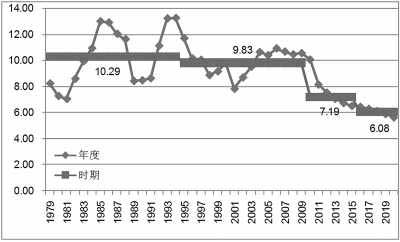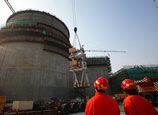
 |
| Estimated GDP potential growth rate from 1979 to 2019.(People's Daily/Photo) |
Edited and translated by Liang Jun, People's Daily Online
The number of working-age population in China, between 15 and 59 years old, dropped by 3.45 million in 2012 from the previous year, according to the National Bureau of Statistics (NBS) recently.
It is the first time the country has recorded an absolute decrease in the working-age people in "a considerable period of time", said Ma Jiantang, NBS director, at a press conference. "We need to pay serious attention to this," he said.
It means the inflection point for the disappearance of demographic dividend had appeared in 2012, which will have a significant impact on the growth of Chinese economy, Cai Fang, director of the Institute of Population and Labor Economic at the Chinese Academy of Social Sciences (CASS), told the People's Daily during interview.
To judge whether a country has the demographic dividend, we should notice two factors: one is the labor force volume, and the other is the dependency ratio, which is an age-population ratio of those not in the labor force (the dependent part) and those in the labor force (the productive part).
Over the past considerable period of time, China had demographic dividend. Since 2012, the number of working-age population decreased gradually. Report issued by the China Development Research Foundation shows the number will decrease by over 29 million from 2010 to 2020. Simultaneously, the dependency ration will grow and so China's demographic dividend will disappear, said Cai Fang.
 |
















 Buildings collapse after subsidence in S China
Buildings collapse after subsidence in S China


![]()
